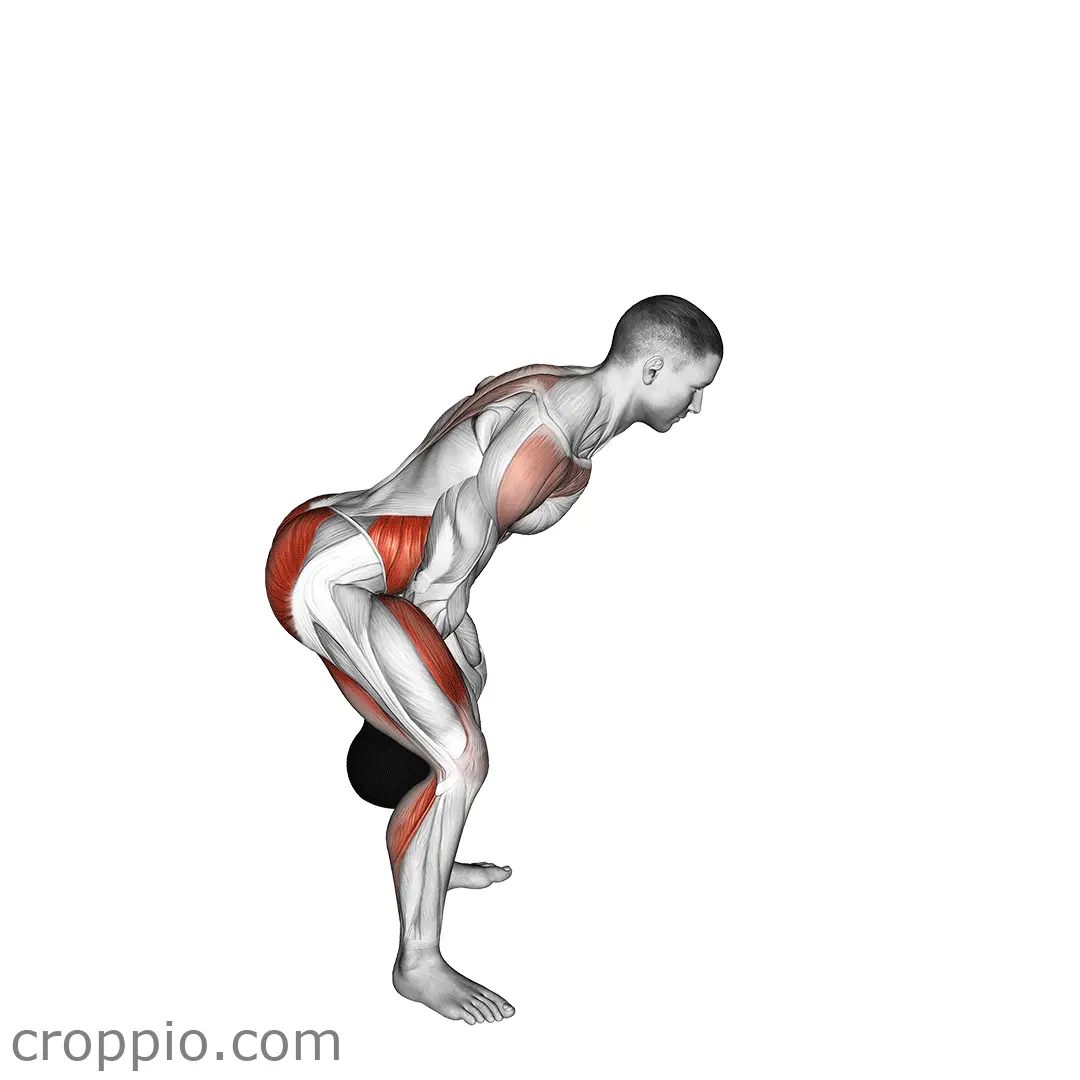Kettlebell Side Squat

Muscles Involved
The kettlebell side squat is an excellent exercise that primarily targets the quadriceps, hamstrings, and glutes. As you lower your body into the squat, these muscles engage to control the descent and support the weight of the kettlebell. The hip adductors, located on the inner thighs, also play a crucial role in stabilizing the movement, while the core muscles, including the abdominals and obliques, work to maintain proper posture and balance throughout the exercise. This makes the kettlebell side squat a compound movement that effectively engages multiple muscle groups simultaneously.
Top Mistakes
- Leaning too far forward: This can strain the lower back and shifts focus away from the targeted muscles.
- Allowing the knees to collapse inward: This misalignment can lead to knee injuries and reduces the effectiveness of the squat.
- Not engaging the core: Failing to maintain core tension can affect stability and form.
- Lifting the kettlebell too high: This can cause unnecessary strain on your arms and shoulders, leading to poor squat mechanics.
Execution Tips
- Start with your feet shoulder-width apart. Hold the kettlebell with both hands at chest level or by your side.
- Engage your core and keep your back straight as you initiate the squat by sending your hips back and bending your knees outwards.
- Keep your weight on your heels and ensure your knees track over your toes to maintain proper alignment.
- Lower your body as far as is comfortable, ideally until your thighs are parallel to the ground, and then drive through your heels to return to the starting position.
Workouts
The kettlebell side squat can be effectively incorporated into a full-body workout or a lower-body focused session. Consider performing 3 sets of 10-15 repetitions per side as part of a circuit, including exercises like kettlebell swings or lunges to complement lower body engagement. For an endurance-based routine, try 5 sets of 8-10 reps with a slightly heavier kettlebell, ensuring you maintain proper form throughout. Pairing it with core exercises, such as planks, can also enhance overall stability and strength.
Conclusion
Incorporating kettlebell side squats into your fitness routine offers a multitude of benefits, including increased lower body strength, improved flexibility, and enhanced stability. This dynamic movement not only targets major muscle groups effectively but also engages the core, making it an efficient exercise for overall conditioning. By practicing proper execution and avoiding common mistakes, you can maximize the advantages of this versatile movement and achieve your fitness goals.



